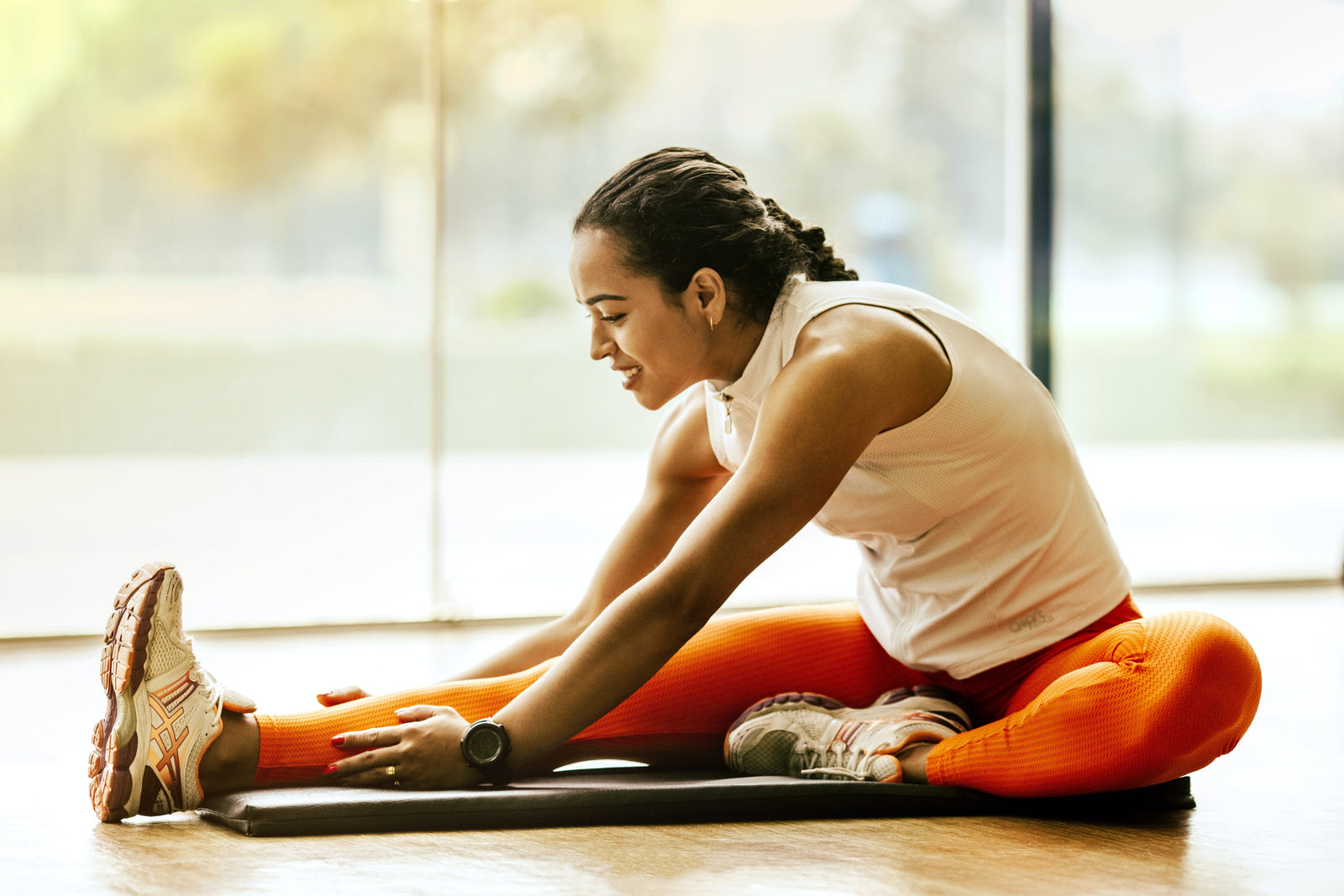Exercise accessories and tools help us take our workouts to the next level.
Peleton machines help us cycle while following an instructor on a built-in screen, a comfy yoga mat can make all the difference during a session, and high-quality, light running shoes help you jog with ease.
But what if we told you that your most effective exercise accessory is free? Better yet, you already have it and it’s part of your body. It’s your nose!

Nasal breathing elevates physical activity, while mouth breathing hinders it. Before we cover all of the benefits of nasal breathing during exercise, let’s first talk about the main issues with mouth breathing.
How Mouth Breathing Hinders The Body
Your mouth is there to help you eat, drink, and speak. While youcan use the mouth to breathe, that doesn’t mean youshould. It doesn’t offer the most efficient delivery method of oxygen.
Your nose, however, does. Your mouth is supposed to exist as a “backup” for breathing during times of nasal congestion, allergies, or extreme physical exertion.
Breathing exclusively through the mouth not only slows the body down, but also increases your risk for developing crippling health conditions such as:
- Chronic dry mouth
- Allergies
- Halitosis (bad breath)
- Oral health issues such as tooth decay or gingivitis
- Snoring and sleep apnea
- Jaw misalignment
The primary reason mouth breathing is harmful? The mouth can’t warm, filter, or humidify the air the same way that the nose can.
Mouth breathing also leads to over-breathing, which puts the body in a state of “fight or flight” by activating the sympathetic nervous system. Over time, this wears the body down.
Nasal breathing warms, filters, and humidifies the air you breathe all while helping the body operate like a fine-tuned machine. This boosts endurance during exercise, helping you to push yourself harder and move faster for longer.
How Nasal Breathing Boosts Endurance and Oxygenation
If you’re pushing it hard in the gym, you’re putting your body under a large amount of stress. During exercise, your heart rate and blood pressure ramp-up to increase blood flow to the muscles you’re using.
In turn, your breathing rate usually rises, since your muscles need more oxygen than usual. Surprisingly, slowing down your breathing as this happens can help you deliver oxygen more efficiently than over-breathing.

Nasal breathing during exercise (and rest) activates your body’s “rest and digest” response by utilizing the parasympathetic nervous system to slow your heart and breathing rate.
This counteracts the effects of a high-intensity workout, helping to keep the body operating at peak performance. In summary? Although your breathing slows when you nasal breathe, your oxygenation rates improve.
It sounds strange that breathing slowly can improve your oxygen supply, but the science doesn’t lie.
Breathing slowly at a steady rate, which is made possible with the nose, allows for carbon dioxide (CO2) levels within the body to rise to appropriate levels before being expelled.
This process is known as the Bohr effect. When CO2 rises within the body, the body’s ability to tolerate it rises with it.
When CO2 rises, oxygen is released to the cells and tissues with less effort, meaning proper oxygenation is achieved.
Research has proven this process in action. Ten runners were tested while using both nasal breathing and mouth breathing during a workout. The nasal breathers saw a significant decrease in respiratory rate and the ratio of oxygen to carbon dioxide within the body.

This is attributed to the mechanics of the Bohr effect. During nasal breathing, more CO2 is on stand-by within your body, allowing you to push harder during a workout with less effort.
Nitric oxide, which is released by the nose, also works to increase lung capacity and prevent injuries during a workout.
The Nose Helps to Prevent Injuries and Boost Recovery
While your mouth appears to be larger, the nose offers a longer passageway for air to travel into the body. In fact, nasal breathing activates the diaphragm, located at the very base of the lungs.
The diaphragm helps you breathe deeply, maintain better posture, and keep your form strong. Thanks to this, nasal breathing also helps to prevent injuries associated with improper form during exercises such as lifting or yoga.
Beyond that, the nose can help you recover from soreness quickly. Since nasal breathing helps the body oxygenate efficiently and function at top capacity, recovery is more easily achievable.

When you breathe slowly in and out of the nose, your heart rate will sync up to each breath. In turn, you can synchronize your movements to your breath, helping to reduce stress within your system.
The parasympathetic nervous system, which we mentioned earlier, activates to help keep you out of fight or flight mode. Cortisol decreases while nitric oxide rises. As a result, you can recover more quickly after physical exertion because the body won’t be stuck in overdrive.
Now that you’re aware of the benefits of breathing through the nose during exercise to improve your health, boost endurance, properly oxygenate the body, and prevent injuries, you may be wondering how to put it into practice.
How to Incorporate Nasal Breathing Into Your Workouts
When you’re used to always mouth breathing, it can be hard to begin nasal breathing during exercise. Think about making the switch in the same way you think about training.
Your airway is just like any other muscle. You have to train it to strengthen it. Starting out, it may be difficult to nasal breathe while you exercise because your body is simply not accustomed to the practice.
That’s why you have to add it into your routine little by little. Work on nasal breathing while you’re going about everyday activities outside of exercise. Check-in with your breath often, work on keeping the lips closed, and maintain a proper lip seal.
Achieve proper tongue posture by placing the tongue against the roof of the mouth, just behind the teeth. The tip, middle, and back of the tongue should touch the roof of the mouth at all three points.
@somnifix Tongue Posture 101 with Myofunctional Therapist Sarah Hornsby #airwayhealth #healthylifestyle #biohacking #nosebreathing via #youtube
♬ Resonance - Home
Most people have a hard time achieving a lift at the back of the tongue. If this is the case for you, you may need the help of a licensed myofunctional therapist and/or tongue strengthening exercises.
Once you achieve a proper tongue posture and you can nasal breathe throughout the day, you can incorporate it into your workouts. Nasal breathe as you warm-up and cool down.
From there, nasal breathe during your workout by building up the practice in five-minute increments. Eventually, your tolerance will build and you’ll maintain nasal breathing throughout your entire workout.

If you still find yourself struggling to get in the habit of nasal breathing during exercise, physical aids like mouth tape can help you achieve your goals without a second thought.
Achieve Nasal Breathing During Exercise With SomniFix
Mouth tape works exactly as it sounds; it allows you to physically maintain a lip seal so that you won’t mouth breathe out of habit.
Not all tape is created with the same quality in mind. However, SomniFix is. It’s hypoallergenic, gluten-free, and latex-free.

No matter what your workout throws your way, our tape has you covered (with no irritation or pesky discomfort).
If you find yourself extremely winded, our strips allow for emergency mouth breathing through a small breathing vent. Better yet, you can even wear them at night to increase sleep quality and prevent snoring.
Tape your way to better endurance, enhanced oxygenation, injury prevention, and more by popping a strip on before your next training session.



